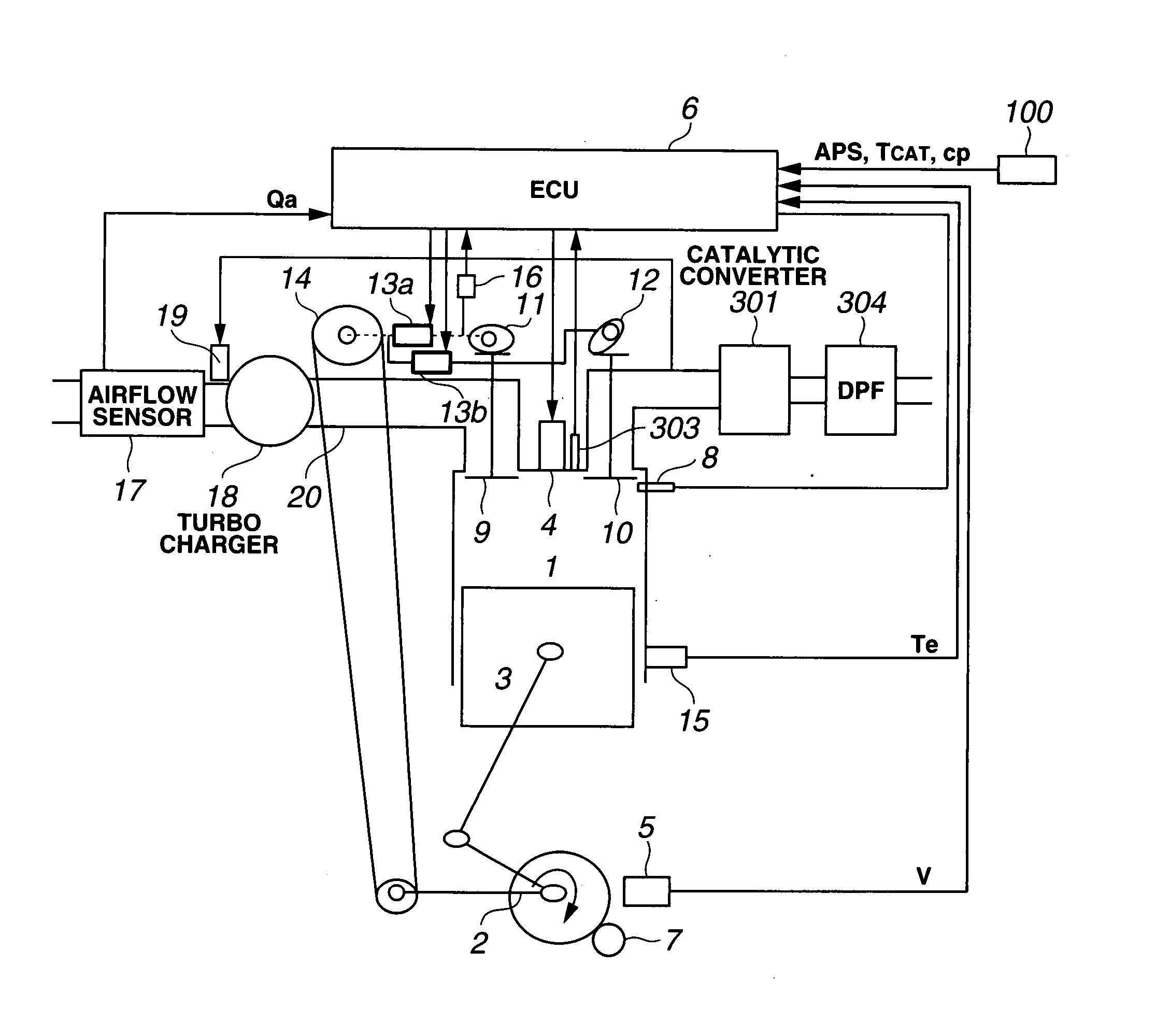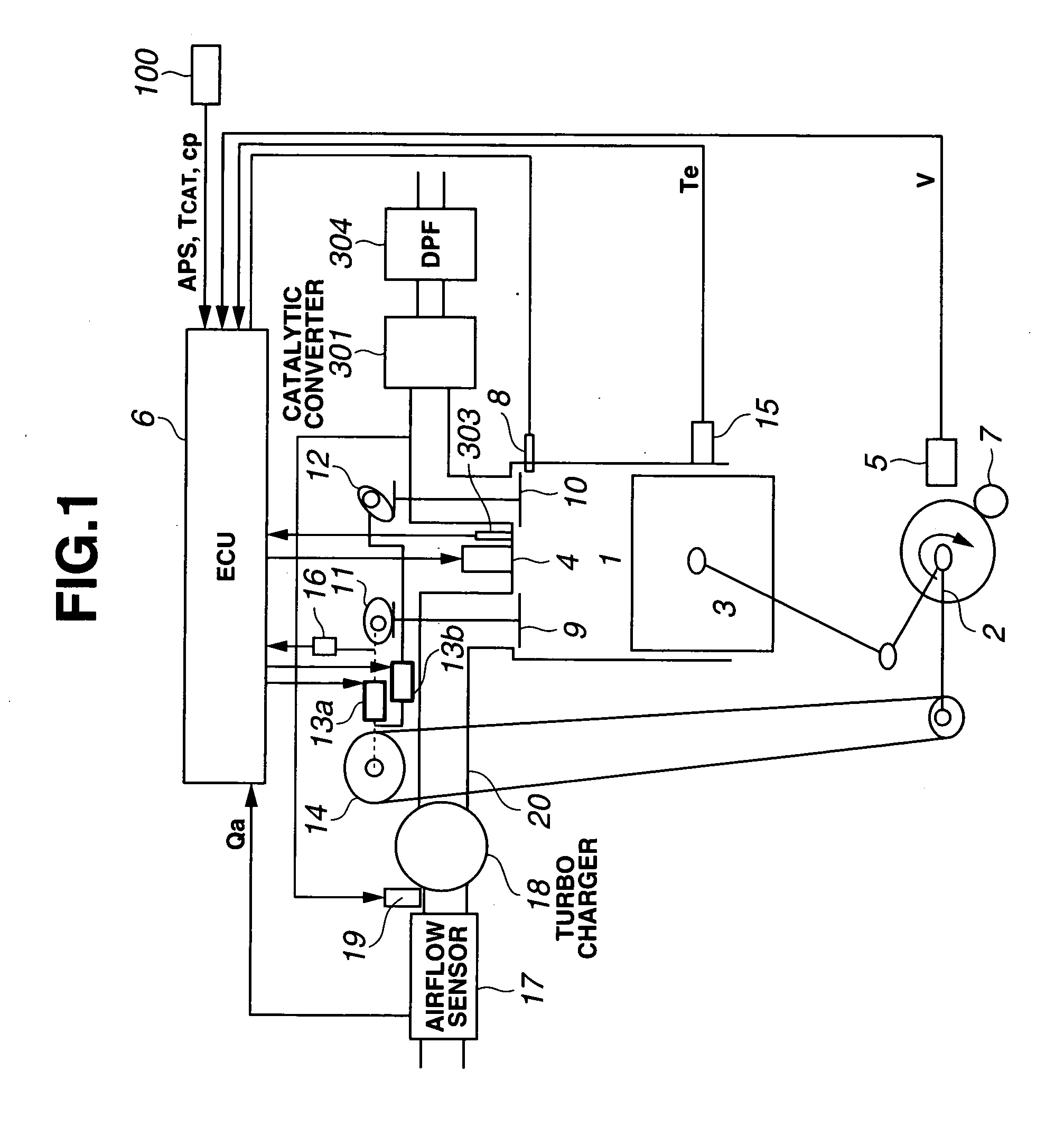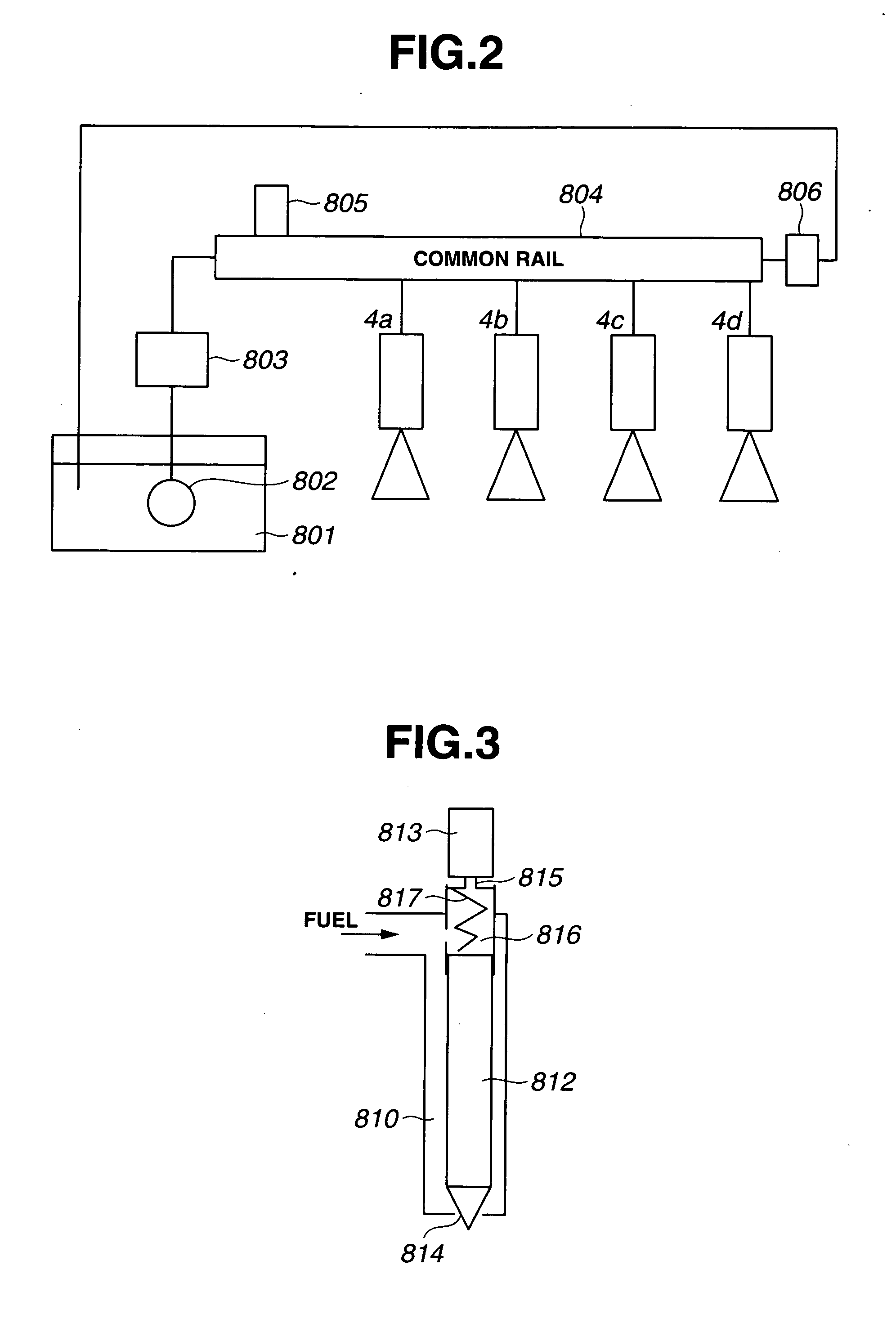Multistage fuel-injection internal combustion engine
a fuel injection and internal combustion engine technology, applied in the direction of machines/engines, output power, electric control, etc., can solve the problems of increasing the tendency of the operation of the electronic fuel injection control the operation of the vvc system and the increase of the operation of the intake-valve closing operation and the fuel-injection operation to interfere with each other
- Summary
- Abstract
- Description
- Claims
- Application Information
AI Technical Summary
Benefits of technology
Problems solved by technology
Method used
Image
Examples
Embodiment Construction
[0043] Referring now to the drawings, particularly to FIG. 1, the variable valve actuation control (VVC) system incorporated in the multistage fuel-injection internal combustion engine of the embodiment is exemplified in a four-stroke-cycle engine. As indicated by the arrow in the system block diagram of FIG. 1, a crankshaft 2 of an engine 1 rotates clockwise. As is generally known, a piston position at which a reciprocating piston 3 has moved to the bottom of the cylinder of engine 1, corresponds to 180 degrees of crank angle. The lowest piston position is called “bottom dead center (BDC)”. A piston position obtained when engine crankshaft 2 further rotates and thus piston 3 has reached the top of the engine cylinder, corresponds to 360 degrees of crank angle (360° crank angle) or 0° crank angle. The highest piston position is called “top dead center (TDC)”.
[0044] In the case of usual diesel combustion, diesel fuel (fuel oil) is sprayed or injected via a fuel injection valve 4 int...
PUM
 Login to View More
Login to View More Abstract
Description
Claims
Application Information
 Login to View More
Login to View More - R&D
- Intellectual Property
- Life Sciences
- Materials
- Tech Scout
- Unparalleled Data Quality
- Higher Quality Content
- 60% Fewer Hallucinations
Browse by: Latest US Patents, China's latest patents, Technical Efficacy Thesaurus, Application Domain, Technology Topic, Popular Technical Reports.
© 2025 PatSnap. All rights reserved.Legal|Privacy policy|Modern Slavery Act Transparency Statement|Sitemap|About US| Contact US: help@patsnap.com



